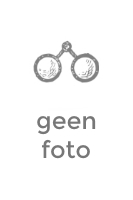Epistolarium I - Hildegardis Bingensis; L. Van Acker
I-XC

KORTE INHOUD
This volume inaugurates the first comprehensive critical edition of the correspondance of Hildegard. Texts of 123 pieces of correspondence make up the volume; the complete edition will comprise 482. The edition brings to fruition the scholarship of the last hundred years concerning the body of lettres and gathers together for the first time the texts from all the important witnesses. Van Acker throws dramatic new light on the question of authenticity in the introduction to this volume. He has advanced our understanding of the development of the body of Hildegard's correspondence and produced an indispensable tool for researchers. (Publisher's information).
Details
1991Uitgever: Brepols Publishers304 paginasTaal: LatijnISBN-10: 2503039111ISBN-13: 9782503039114Koop dit boek tweedehands
bij volgende verkopers

Stel vraag Boek
Turnhout, 1993. 231-533p. Original gilt stamped terra-cotta cloth. Small sticker glued to paste-down endpaper. Series: Corpus Christianorum, Continuatio Mediaevalis, XCI A. [Antiquarian] [Auteur: HILDEGARD BINGENSIS,] [Uitgever: Brepols] [Jaar: 1993] [Titel: Epistolarium. Pars Prima I-XC. Pars Secunda XCI-CCL R. Edidit L. Van Acker.]

Stel vraag Boek
Turnhout, 1991. XXII, 230p. Original gilt stamped terra-cotta cloth. Small sticker glued to paste-down endpaper. Series: Corpus Christianorum, Continuatio Mediaevalis, XCI. [Antiquarian] [Auteur: HILDEGARD BINGENSIS,] [Uitgever: Brepols] [Jaar: 1991] [Titel: Epistolarium. Pars Prima I-XC. Pars Secunda XCI-CCL R. Edidit L. Van Acker.]

1 foto's
This volume inaugurates the first comprehensive critical edition of the correspondance of Hildegard. Texts of 123 pieces of correspondence make up the volume; the complete edition will comprise 482. The edition brings to fruition the scholarship of the last hundred years concerning the body of lettres and gathers together for the first time the texts from all the important witnesses. Van Acker throws dramatic new light on the question of authenticity in the introduction to this volume. He has advanced our u...

